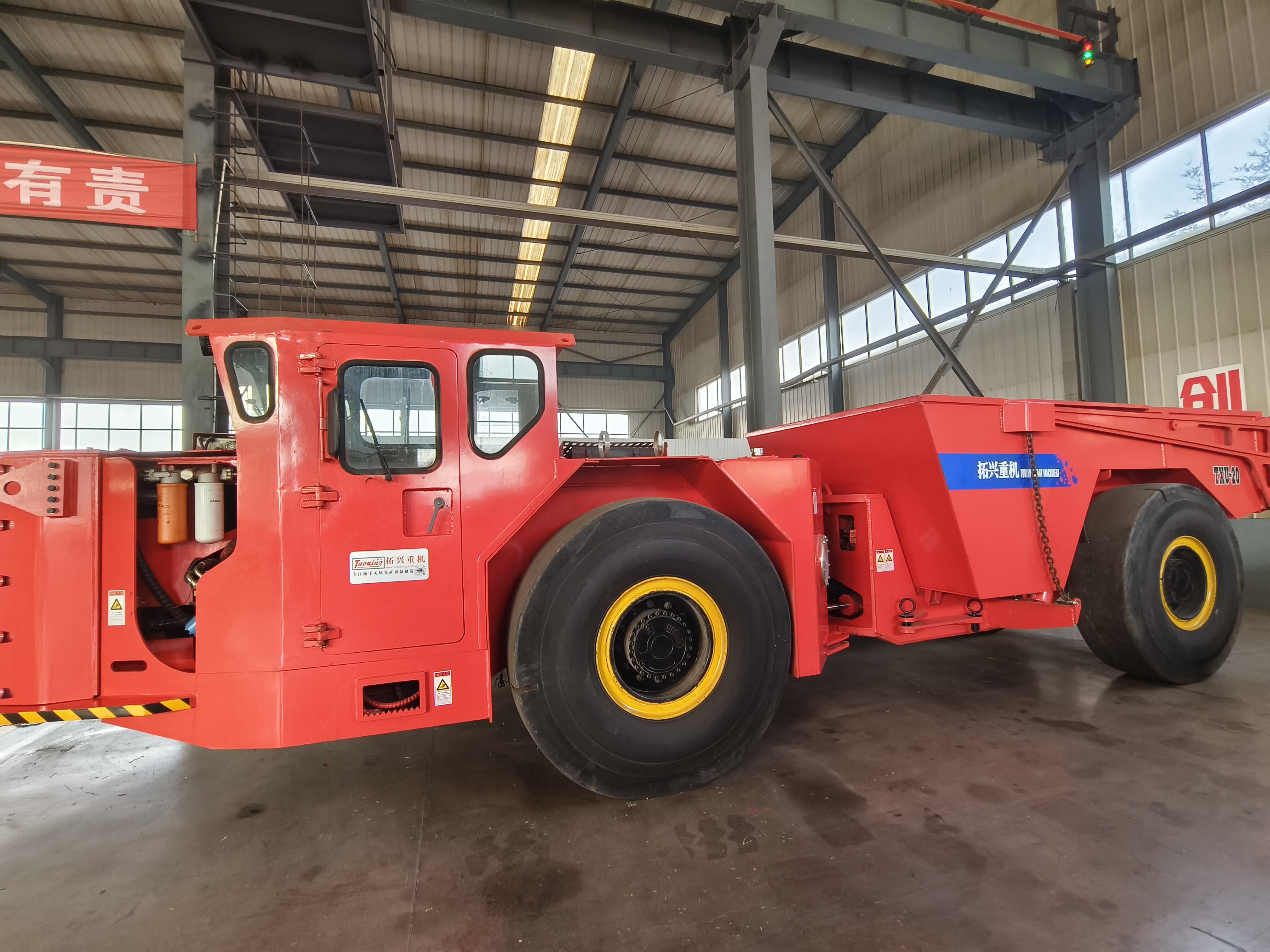Revolutionizing Mining Operations Through Advanced Underground Transport
Underground mining trucks have become the backbone of modern mining operations, transforming the way minerals and resources are extracted from beneath the Earth's surface. These specialized vehicles represent a critical investment for mining companies seeking to optimize their operations and maximize productivity. In today's competitive mining industry, the implementation of efficient underground mining trucks has become essential for maintaining profitability and meeting growing global demand for minerals.
The evolution of underground mining trucks has paralleled the advancement of mining technology itself. From early manual cart systems to today's sophisticated automated vehicles, these powerful machines have consistently proven their worth in improving mining efficiency, safety, and operational capabilities. Their impact extends far beyond simple material transport, influencing everything from project planning to resource management.
Key Features of Modern Underground Mining Trucks
Advanced Design and Engineering
Modern underground mining trucks are marvels of engineering, specifically designed to operate in challenging subterranean environments. Their compact yet robust construction allows them to navigate through narrow tunnels while maintaining impressive payload capacities. The vehicles feature reinforced frames, specialized suspension systems, and powerful engines calibrated for underground operation.
These trucks incorporate advanced materials and construction techniques that enhance durability while minimizing maintenance requirements. Features like automated lubrication systems, heavy-duty cooling systems, and specialized tire compounds ensure reliable performance in harsh mining conditions. The integration of ergonomic cabins and advanced operator interfaces also contributes to improved productivity and reduced operator fatigue.
Technology Integration and Automation
The integration of cutting-edge technology has revolutionized underground mining trucks. Modern vehicles come equipped with sophisticated navigation systems, real-time monitoring capabilities, and automated safety features. These technological advancements enable precise control over vehicle movements and optimize route planning within the mine.
Automation technologies have particularly transformed the capabilities of underground mining trucks. Many modern units can operate semi-autonomously or fully autonomously, reducing human error and increasing operational efficiency. These systems use a combination of sensors, GPS, and artificial intelligence to navigate mining tunnels safely and efficiently.

Operational Benefits and Efficiency Gains
Enhanced Production Capacity
Underground mining trucks significantly boost production capacity through their ability to handle larger payload volumes and operate continuously. Their efficient design allows for quick loading and unloading cycles, minimizing downtime and maximizing material movement. The implementation of these vehicles has enabled mining operations to achieve unprecedented levels of productivity.
The increased capacity of modern underground mining trucks means fewer trips are required to move the same amount of material, resulting in reduced fuel consumption and lower operating costs. This efficiency translates directly to improved production metrics and better resource utilization across the mining operation.
Safety and Environmental Impact
Modern underground mining trucks incorporate numerous safety features that protect both operators and mining infrastructure. Advanced braking systems, rollover protection, and emergency shutdown capabilities ensure safe operation in challenging conditions. The implementation of these safety features has contributed to significant reductions in mining-related incidents.
From an environmental perspective, newer models of underground mining trucks feature improved emission control systems and more efficient engines. These advancements help mining operations reduce their carbon footprint while maintaining high productivity levels. The integration of electric and hybrid technologies in some models further demonstrates the industry's commitment to sustainable mining practices.
Economic Implications and Return on Investment
Cost Efficiency and Resource Optimization
The implementation of underground mining trucks represents a significant initial investment, but the long-term economic benefits are substantial. These vehicles enable more efficient resource extraction, reducing operational costs through improved productivity and reduced labor requirements. The ability to move larger volumes of material more quickly directly impacts the bottom line of mining operations.
Advanced maintenance systems and durability features help minimize downtime and repair costs, contributing to better overall cost efficiency. The integration of predictive maintenance technologies allows operators to anticipate and address potential issues before they lead to costly breakdowns.
Long-term Financial Benefits
The long-term financial advantages of investing in modern underground mining trucks extend beyond immediate operational improvements. These vehicles contribute to extended mine life through more efficient resource extraction and enable access to previously uneconomical deposits. The resulting increase in recoverable resources can significantly improve a mine's financial viability.
Moreover, the implementation of underground mining trucks often leads to reduced labor costs and improved worker safety, resulting in lower insurance premiums and reduced liability risks. These financial benefits compound over time, making the initial investment increasingly worthwhile.
Future Trends and Innovations
Emerging Technologies
The future of underground mining trucks looks increasingly automated and connected. Emerging technologies such as artificial intelligence, machine learning, and advanced sensor systems are being integrated into newer models. These innovations promise to further improve efficiency, safety, and operational capabilities.
Development of electric and hydrogen-powered underground mining trucks represents another significant trend. These alternative power sources offer the potential for reduced emissions, lower operating costs, and improved environmental performance. The mining industry's growing focus on sustainability is driving rapid advancement in these technologies.
Industry Evolution and Adaptation
As mining operations become more sophisticated, underground mining trucks continue to evolve to meet changing requirements. Integration with mine-wide digital systems, improved data analytics capabilities, and enhanced autonomous features are becoming standard features. These advancements enable better coordination between different aspects of mining operations and improved overall efficiency.
The industry is also witnessing a shift toward more specialized vehicles designed for specific mining conditions and applications. This specialization allows for optimized performance and improved efficiency in various mining environments.
Frequently Asked Questions
What maintenance requirements do underground mining trucks have?
Underground mining trucks require regular maintenance including daily inspections, scheduled service intervals, and periodic major overhauls. Key maintenance areas include engine systems, hydraulics, tires, and electrical components. Modern trucks often feature automated monitoring systems that help predict and prevent potential issues.
How do underground mining trucks compare to surface mining vehicles?
Underground mining trucks are specially designed for confined spaces and harsh underground conditions. They typically feature more compact designs, specialized ventilation systems, and enhanced safety features compared to surface mining vehicles. Their construction prioritizes maneuverability and durability in tunnel environments.
What factors should be considered when selecting underground mining trucks?
Key considerations include the mine's specific requirements, tunnel dimensions, payload needs, and operating conditions. Other factors include maintenance support availability, power source options, automation capabilities, and total cost of ownership. The selection process should also account for future expansion plans and environmental regulations.

